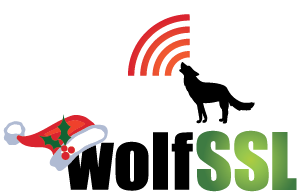Do you want to use the Analog Devices Inc./Maxim Integrated MAXQ1065 ultra-low-power secure authenticator? If so, then you’ll be interested to know that wolfSSL now supports it! You can use the MAXQ1065 to accelerate your TLS 1.2 connections in your applications by taking advantage of wolfSSL’s integration into the MAXQ10xx SDK. With this new addition, […]
Read MoreMore TagMonth: November 2022
DTLS 1.3 Benchmarks
wolfSSL has support for the new DTLS 1.3 protocol. You can learn more about this protocol in our “What’s new in DTLS 1.3” blog post (https://www.wolfssl.com/whats-new-dtls-1-3/) and how to use it in our “DTLS 1.3 Examples and Use Cases” blog post (https://www.wolfssl.com/dtls-1-3-examples-use-cases/). In this post we will compare some benchmarks between DTLS 1.2 and 1.3. […]
Read MoreMore TagDTLS 1.3 Examples and Use Cases
wolfSSL has support for the new DTLS 1.3 protocol. You can learn more about this protocol in our “What’s new in DTLS 1.3” blog post (https://www.wolfssl.com/whats-new-dtls-1-3/). Using DTLS 1.3 in wolfSSL is almost as easy as using DTLS 1.2! Client implementations only need to change their existing wolfDTLSv1_2_client_method() calls into wolfDTLSv1_3_client_method(). If you are using […]
Read MoreMore TagWhat’s new in DTLS 1.3
The DTLS 1.3 standard has recently been published in April 2022 in RFC 9147. It features many improvements and additions to increase security and efficiency of the DTLS protocol. At wolfSSL, we like to be very quick adopters of new standards which is why initial support for DTLS 1.3 was merged in June and appeared […]
Read MoreMore TagCustomized ad-hoc secure boot with wolfBoot
wolfBoot is known for being the universal secure bootloader for all types of embedded systems. While initially targeting 32-bit microcontrollers, wolfBoot has grown into a full framework to implement secure boot solutions on a wide range of different systems and architectures. This is mostly due to wolfBoot modularity and flexibility, which makes our solution easy […]
Read MoreMore TagwolfCrypt JCE Provider and JNI Wrapper 1.5.0 Now Available
Version 1.5.0 of the wolfCrypt JCE Provider and JNI wrapper is now available for download! wolfCrypt JNI/JCE provide Java-based applications with an easy way to use the native wolfCrypt cryptography library. The thin JNI wrapper can be used for direct JNI calls into native wolfCrypt, or the JCE provider (wolfJCE) can be registered as a […]
Read MoreMore TagAnnouncing New Capabilities in wolfSentry
As wolfSentry gets ever closer to its first production release, we are introducing some exciting new capabilities, among them: Mature dynamic rule management, with automatic peer tracking, penalty boxing, O(1) release from penalty box, and realtime-safe (O(1)) limits on resource usage. Robust support in the configuration file and public API for user-defined data (key-value pairs) […]
Read MoreMore TagwolfSSL running on Xilinx Versal Hardware Encryption
Our Xilinx Versaldemo shows wolfSSL making calls to Xilinx hardened crypto, doing both basic unit tests and benchmarking with it. Xilinx hardened crypto is accelerated crypto operations (SHA3-384 / AES-GCM / RSA / ECDSA) available on Ultrascale+ devices and is available for use with the latest and greatest Versal boards. wolfSSL makes these calls using […]
Read MoreMore TagwolfSSL TriCore HSM Support
The Infineon Tricore TC2xx and the new TC3xx series chips are popular chips among safety and security critical applications. As the name implies, these chips come with multiple CPU cores to meet the demands of real time computing, however some variants come with a built in HSM core that is an ARM Cortex M3 operating […]
Read MoreMore TagwolfSSL 5.5.3 release
wolfSSL 5.5.3 is available! This is a minor release, containing some enhancements, fixes and one vulnerability fix. The vulnerability fix was thanks to a report from the Trail of Bits team! It affects a very specific build, having the debug macro WOLFSSL_CALLBACKS set. If using WOLFSSL_CALLBACKS it is recommended to upgrade to wolfSSL version 5.5.3 […]
Read MoreMore Tag
